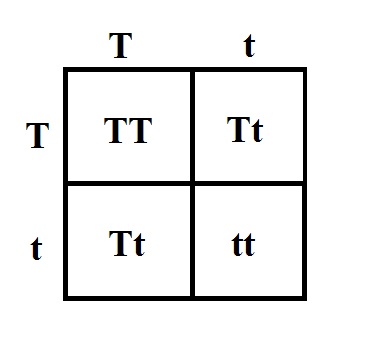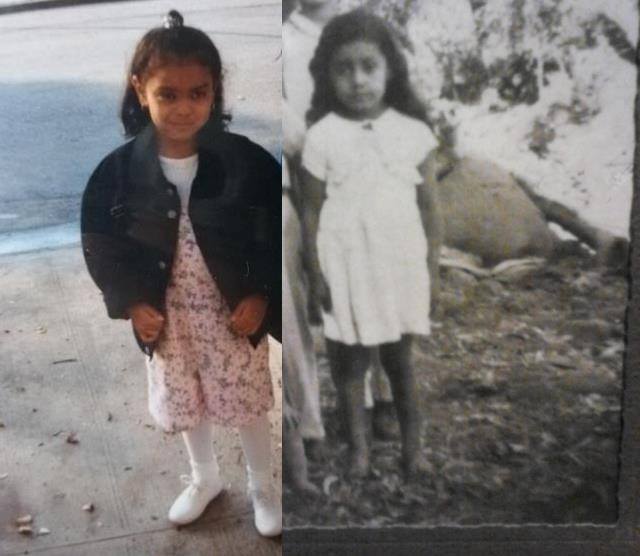Or your father's smile. How many times have you heard of being compared to a parent or a grandparent? The answer lies in this one phrase: heredity. Nowadays this factor is not discussed much, but just when it was being studied it all the rage. Especially for the man who made this his life's study; Gregor Mendel. He was a monk in the Czech Republic who lived at the same time as Darwin. Before Mendel's research many, even Darwin, thought that traits were a result of blending. For example if you take red and white you would get pink. But Mendel worked out how some traits were passed on from one generation to the next. He did this with plants.
Being a monk he had resources for plants, and this factor was fortunate both for him and the scientific community. Reason being is that plants, even though have a short life span, can reproduce quickly, have many offspring, and the most important factor in Mendel's experiments, he could control how they bred. The plants he used were pea plants. These were perfect for his experiments because the different traits pass independently from one to another. He started with ones that shared the same traits; tall bred with tall, short with short. As these reproduced he would take the results and cross them; tall with short. When he has the new one from this cross between tall and short which gave him tall he would continue to create these tall ones that came from the tall and short cross. Once he had tall he would cross the new tall ones that had both the possibility to be tall or short. At the end of this he had 20,000 second generation peas. He would get more tall than short; 3 to 1. Below is a Punnett square with an example of how the traits are passed on.
(Capital T's represent tall and lower case t's represent short)
Being a monk he had resources for plants, and this factor was fortunate both for him and the scientific community. Reason being is that plants, even though have a short life span, can reproduce quickly, have many offspring, and the most important factor in Mendel's experiments, he could control how they bred. The plants he used were pea plants. These were perfect for his experiments because the different traits pass independently from one to another. He started with ones that shared the same traits; tall bred with tall, short with short. As these reproduced he would take the results and cross them; tall with short. When he has the new one from this cross between tall and short which gave him tall he would continue to create these tall ones that came from the tall and short cross. Once he had tall he would cross the new tall ones that had both the possibility to be tall or short. At the end of this he had 20,000 second generation peas. He would get more tall than short; 3 to 1. Below is a Punnett square with an example of how the traits are passed on.
(Capital T's represent tall and lower case t's represent short)
When speaking of heredity there is one factor we can see from the get go. This is called phenotype. It is the observable physical characteristics of an organism. Like the pea plants, the phenotype, which has our genetic coding, tall is the dominant trait. Also, being human, you know how different we can look. Let us say you see someone with dark hair, but green eyes, one parent most likely had blue eyes with is the universal recessive trait. When it comes to ethnicities, the dominant is African, but it really does depend on the mixture. With a Caucasian and African couple, if they reproduce, their child will have dark skin. If a Caucasian and Asian couple, the child comes out looking more like their Caucasian parent.
Some of these phenotypes happen mostly in females, these are called X-linked dominant. Reason it is X-linked is because this trait is passed on through the X chromosome, and because of this it is more common in female. Females have a chromosome make up of XX while males have one of XY, and if you remember the Putnnett square from above, this is why these X-linked dominants happen mostly in females. While the X-linked dominant is, well, dominant, there is another but this one is x-linked recessive. As such, this one is more common in males because of the one X chromosome they have. The lower case “x” illustrates that it is indeed recessive. But there are other traits that are no sex linked, by this I mean they can happen to males and females equally. Let us start with the Autosomal (not sex-linked) dominant. These only need one copy of the coding allele (alternative form of a gene) to see the trait that it will become. Because it only needs one these are more commonly seen (dark hair, brown eyes). These do not skip generations and if you remember my example of a dark haired green eyed person, only one parent has to be the carrier. Now to a dominant there is a recessive. Unlike the Autosomal dominant the Autosomal recessive needs 2 copies of coding allele. Also unlike the dominant this recessive are more rare because of the fact that they are recessive (light hair, green eyes). These, unlike its dominant counterpart, can skip generations.
In this blog I hope that I have shed some light to why people look how they look. No matter if you have a common trait, such as brown eyes, do not feel that you are not special, you are the dominant. And for those who have recessive traits, such as green eyes, do no dismay, you may be the recessive, but that is what makes you special. Everyone has something to add to the human race, whether it be brains, brawn....brown eyes, green eyes. I, who have known this for a while, still feel it is cool how much genetics have to do with what makes us different, what makes us similar, what makes us...us. If you would like to read a list of dominant and recessive traits here is a link: http://www.blinn.edu/socialscience/ldthomas/feldman/handouts/0203hand.htm.
Below is a side by side comparison of a daughter (in colour) and her mother (in black and white), to drive the point of how much heritage plays a part.
Please feel free to comment on what you thought of the blog, or other physical anthropological subjects you would like me to cover.
Some of these phenotypes happen mostly in females, these are called X-linked dominant. Reason it is X-linked is because this trait is passed on through the X chromosome, and because of this it is more common in female. Females have a chromosome make up of XX while males have one of XY, and if you remember the Putnnett square from above, this is why these X-linked dominants happen mostly in females. While the X-linked dominant is, well, dominant, there is another but this one is x-linked recessive. As such, this one is more common in males because of the one X chromosome they have. The lower case “x” illustrates that it is indeed recessive. But there are other traits that are no sex linked, by this I mean they can happen to males and females equally. Let us start with the Autosomal (not sex-linked) dominant. These only need one copy of the coding allele (alternative form of a gene) to see the trait that it will become. Because it only needs one these are more commonly seen (dark hair, brown eyes). These do not skip generations and if you remember my example of a dark haired green eyed person, only one parent has to be the carrier. Now to a dominant there is a recessive. Unlike the Autosomal dominant the Autosomal recessive needs 2 copies of coding allele. Also unlike the dominant this recessive are more rare because of the fact that they are recessive (light hair, green eyes). These, unlike its dominant counterpart, can skip generations.
In this blog I hope that I have shed some light to why people look how they look. No matter if you have a common trait, such as brown eyes, do not feel that you are not special, you are the dominant. And for those who have recessive traits, such as green eyes, do no dismay, you may be the recessive, but that is what makes you special. Everyone has something to add to the human race, whether it be brains, brawn....brown eyes, green eyes. I, who have known this for a while, still feel it is cool how much genetics have to do with what makes us different, what makes us similar, what makes us...us. If you would like to read a list of dominant and recessive traits here is a link: http://www.blinn.edu/socialscience/ldthomas/feldman/handouts/0203hand.htm.
Below is a side by side comparison of a daughter (in colour) and her mother (in black and white), to drive the point of how much heritage plays a part.
Please feel free to comment on what you thought of the blog, or other physical anthropological subjects you would like me to cover.


 RSS Feed
RSS Feed
